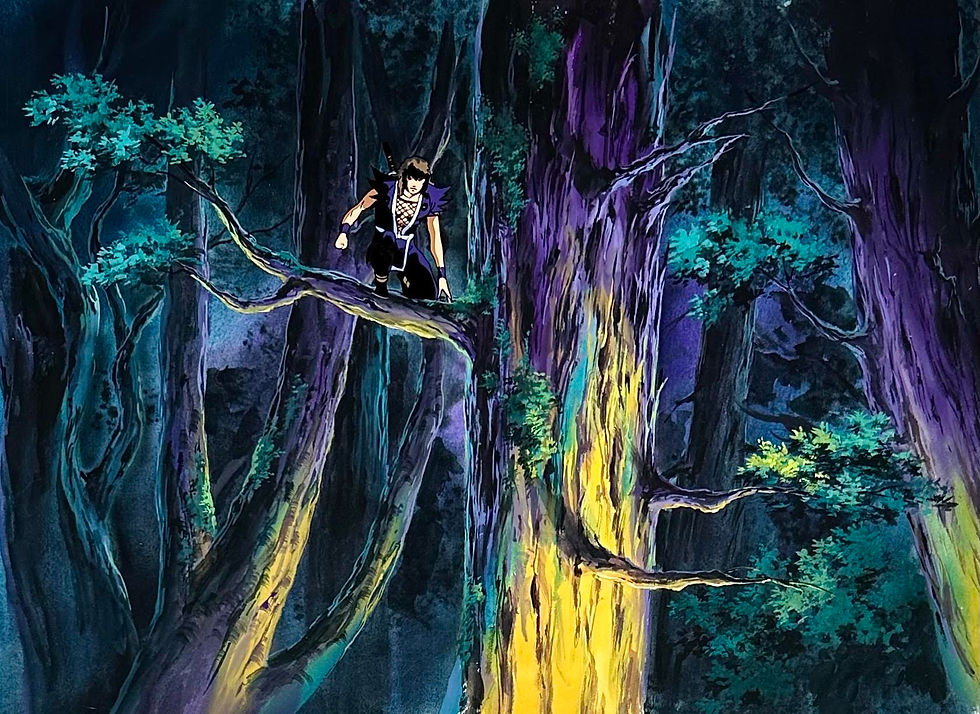Original Production Cel of Kabuto from "Karasu Tengu Kabuto - The Golden-Eyed Beast," 1992
- Untitled Art Gallery

- Oct 16
- 2 min read

Original hand painted production animation cel of Kabuto from "Karasu Tengu Kabuto - The Golden-Eyed Beast," 1992," Nakamura Production; Set on a key original master hand-painted production background; Size - Kabuto: 2 3/4 x 2", Image 7 1/2 x 10"; Background 13 x 16 1/2"; Unframed.
Karasu Tengu Kabuto: The Golden-Eyed Beast (1992) is a Japanese OVA based on Buichi Terasawa’s manga Karasu Tengu Kabuto. Set in a mythic version of feudal Japan, the film follows Kabuto, a warrior descended from the legendary Raven Tengu clan, who returns to his homeland after years away. There he discovers that the kingdom has fallen under the control of the sorceress Tamamushi and her ally Jinnai, an inventor whose mechanical monsters terrorize the people. Kabuto embarks on a quest to rescue Princess Ran and her guardian, confronting both supernatural forces and mechanized horrors in a world that fuses mysticism with technology.
Visually, the OVA reflects the bold, hand-drawn style typical of early 1990s anime. Its aesthetic blends traditional Japanese imagery with fantastical and steampunk-inspired designs, creating an atmosphere of dark heroism and mythic adventure. The 45-minute runtime ensures a fast pace, though this brevity limits deeper character development and emotional nuance. The soundtrack and tone support its mythic scope, though the narrative remains largely archetypal, with familiar tropes of good versus evil, inherited destiny, and technological corruption.
Thematically, the film explores the tension between heritage and innovation, magic and machinery. Kabuto’s connection to his Tengu lineage symbolizes duty and spiritual power, while Jinnai’s machines embody human ambition gone awry. This clash mirrors the broader struggle between nature and artificiality, a theme common in Japanese fantasy and science fiction. Though its story is straightforward—a heroic rescue and battle against dark powers—it offers moments of creativity in its world-building and visual execution.
Viewers appreciate its imaginative setting, action sequences, and distinct hybrid of feudal mysticism and mechanical invention, and for enthusiasts of early ’90s fantasy anime; the film holds a nostalgic charm. The OVA stands as a self-contained tale within the broader Karasu Tengu Kabuto universe, offering a glimpse of Terasawa’s fascination with mythic heroism, mechanical spectacle, and the fusion of ancient legend with futuristic imagination.






